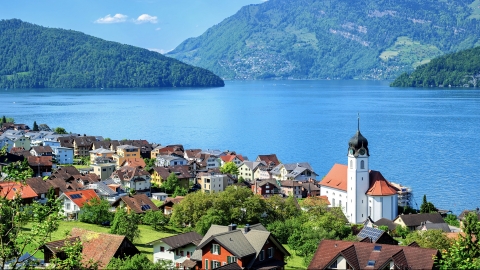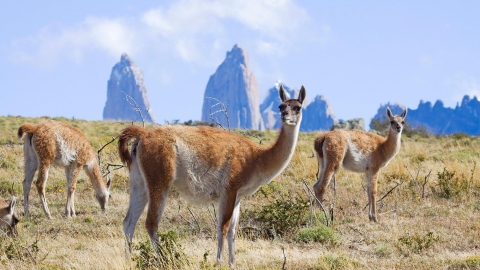I learned about Semporna from a friend's curiosity about the location of a beautiful coral reef photo and then other interesting information when learning about the Sea Gypsies tribe in Malaysia.
To get to Semporna, my group of friends and I flew from Ho Chi Minh City to Kuala Lumpur and transferred to Tawau - the nearest airport to Semporna. Arriving in Tawau, the typical hot weather here made me want to rush to the sea to enjoy some cool breeze. We asked a local to guide us with the hope that he would help us better approach the Sea Gypsies village.

Sea Gypsies
Paradise Islands
From Tawau, we drove for about 1.5 hours through many rolling palm hills to reach Semporna town and boarded a boat to begin our journey to explore the Semporna Marine Reserve. The places that tourists often choose to buy tours or stay in Semporna are: Mabul Island, Sipadan Island. There are many homestays and resorts with prices ranging from low to high for tourists to choose from. These islands are usually 1 - 1.5 hours away from the port by boat. Tourists can choose from many day island tour packages to see the beautiful seascape, dive with a guide and learn to dive for an international certificate at the cheapest price. A small note is that to go to this area, tourists must have a license to visit and dive in the reserve. Tour companies will be the buyers, just register in Semporna.
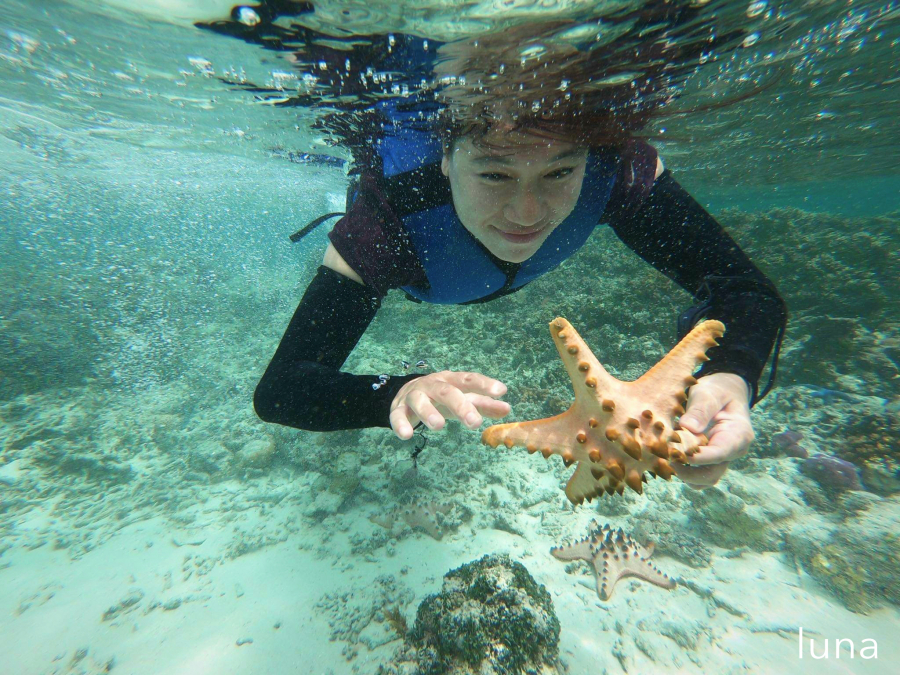
We stayed in Mabul for a day and a night to enjoy delicious and cheap seafood, soak in the music atmosphere in the evening beside the beach, the rest of the time we chose Selankan Island to stop. Selakan is very convenient to go to Bohey Dulang Island, Maiga Island, Sibuan Island, the Sea Gypsies' village as well as the coral reefs.
Mabul Island was the first island we stopped at. Although it is the most crowded tourist destination, the island is still very quiet and lovely. The first impression when I arrived at the homestay was that I saw the houseboats of the Sea Gypsies moored nearby. There were about 10 small boats of the locals carrying seafood such as lobsters, mantis shrimps, clams, mantis shrimps, crabs, fish, sea urchins... to sell to tourists. Going to this floating market is quite interesting, but remember that because this is a tourist destination, you still have to bargain. My group was excited to buy lobsters, mantis shrimps, clams to fill our stomachs, but each person only paid more than 300,000 VND.

Mabul Island is quite compact, the outside is homestays and resorts serving tourists and the inside is the local area. Although this is a famous tourist destination, Mabul has very little trash and is quite clean, that is also the point that impressed me the most. In the cool afternoon, sitting along the wooden piers scattered around the beach is also very lovely.
Unlike the bustling Mabul, Selakan is very peaceful, the whole island is almost deserted because the villagers usually go to work until evening and only come back on weekends. However, we like Selakan the most because it brings a strange sense of peace. In the afternoon, after watching the sunset, we had dinner and sang with two Sea Gypsies friends. Sometimes we just need those gentle moments to forget all the pressures of city life.
From Selakan, we can easily explore Bohey Dulang and other islands. Bohey Dulang is an extremely famous destination with a strangely bright blue sea shelf. From the bridge, we were amazed to see the three-colored blue sea shelf that is transparent to the bottom. Perhaps that is the reason why almost everyone who comes to Semporna wants to see the coral beach with such special colors. You can also climb the mountain for about 45 minutes to the top and see the beautiful coral connection between the two islands.
Life of the Sea Gypsies
From Bohey dulang, we stopped by Tatagan, Maiga to visit the village of the Sea Gypsies - the Sea Digan people. This is the last remaining nomadic mermaid tribe living in this sea area, also known as Bajau Laut. This tribe builds their houses right on the shallows of the sea shelf with many marine creatures. Every day, people catch seafood to sell and as the main source of food for their families. People in this area do not eat rice but mainly eat seafood with a type of food made from cassava flour called Putu.
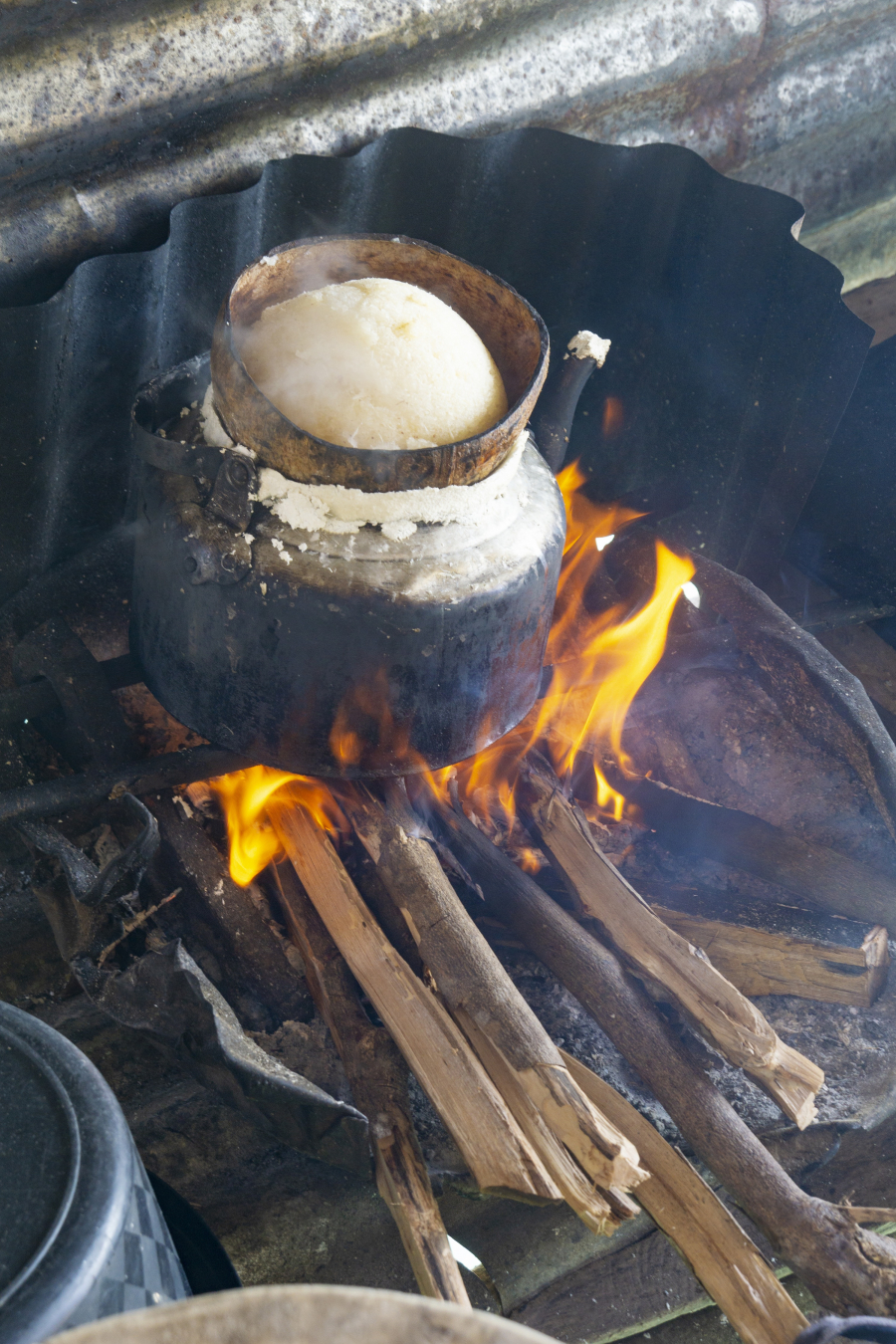
Putu, a traditional local dish
The life of the Sea Gypsies in Semporna is still quite primitive as in previous generations, no electricity, no running water, no television, no telephone and still living almost entirely in houses on the sea or houseboats. People fish every day with nets and rudimentary tools. At low tide, people go to the coral reefs to catch seafood. The people's small wooden boats are very suitable for moving on the reefs. From our boat, we had to wade into the reefs to see the people fishing. The reefs when the tide is low are only knee-high and it is easy to see countless marine creatures such as: starfish, sea urchins, fish, clams...
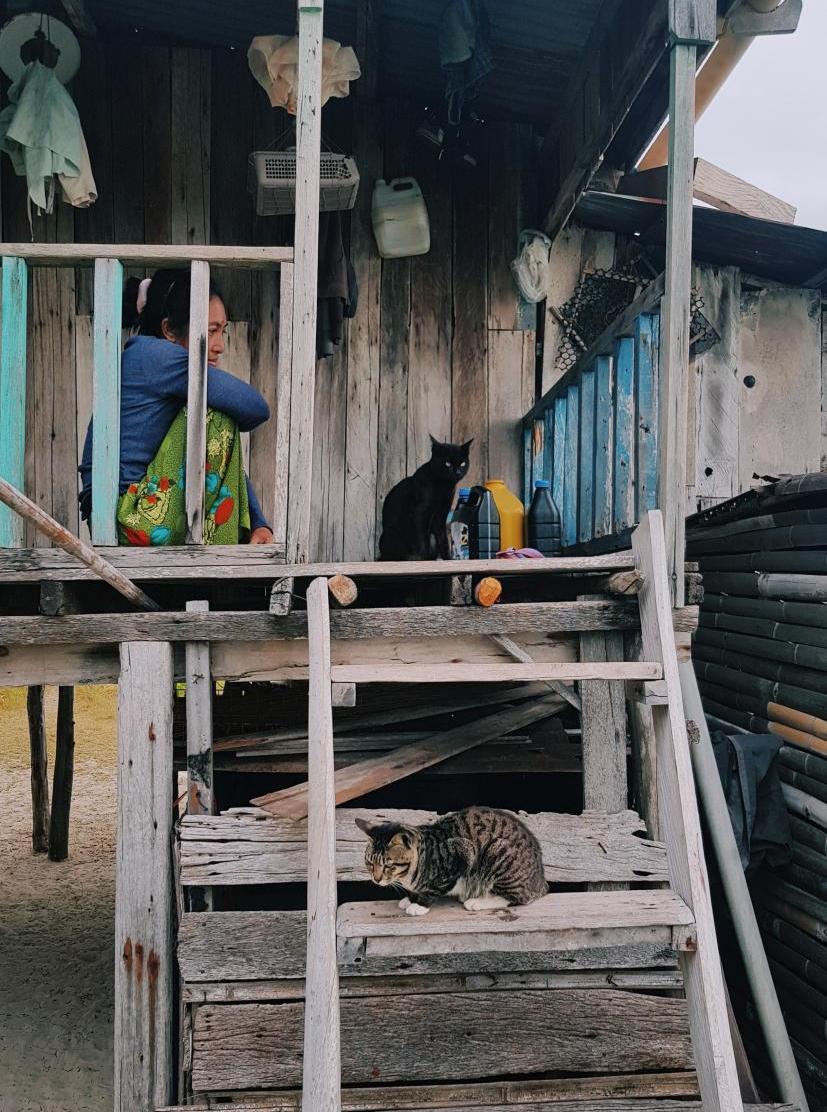
People here love cats.

Sea Gypsies use powder made from seashells for sun protection.

Diving is a skill and a hobby of the Sea Gypsies. All the people can dive deep without oxygen tanks to catch seafood, swim against the tide without any supporting equipment. Thanks to two Sea Gypsies driving the boat, we experienced swimming with the "mermen" and catching clams to eat raw, which was extremely impressive. The life of the Sea Gypsies tribe develops and blends naturally with the sea.
You have to come here once to see the scene of people and nature blending and developing together in the most perfect way. That was also my purpose when coming to Semporna, just to see the daily life of the Sea Gypsies tribe and understand how precious natural resources need to be protected.
Another impressive point for me is that the sea here is crystal clear, calm and strangely blue. Each small boat moves gliding on the sea surface, making me feel like the boat is floating and flying above the sea. From the boat you can clearly see the vegetation, animals, and coral right on the seabed, extremely impressive.
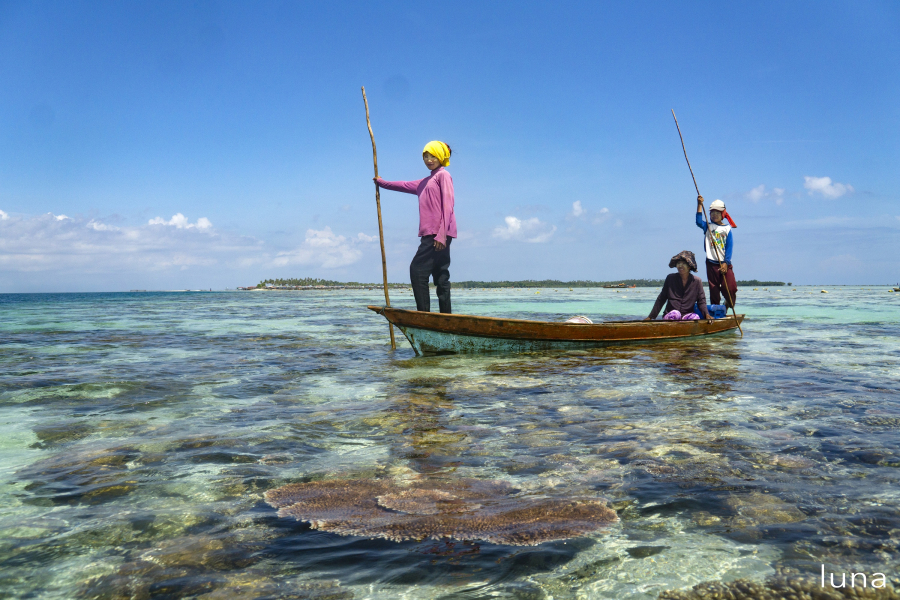
People fishing on the shoal when the tide recedes
To protect the marine environment, the Malaysian government has made the Semporna sea area a national reserve. All visitors to this area must apply for permission, so the number of diving tourists is managed to protect the marine environment from being greatly affected by tourism. The Sea Gypsies' living habits are also encouraged by the government to be preserved as they have been for generations, avoiding the use of modern fishing methods that would cause the tribe to lose its special identity. Perhaps thanks to the attention and awareness of preserving marine resources, the environment in Semporna is quite clean, and the seas still retain a rich marine ecosystem.
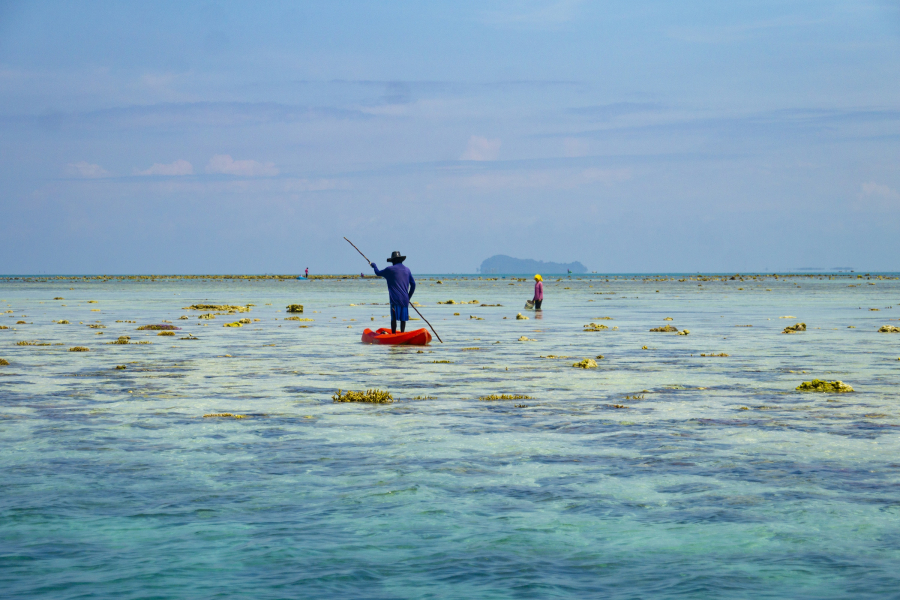
During our stay in Selakan Island, our daily routine consisted of watching the sunrise, immersing ourselves in the life of the Sea Gypsies, going snorkeling in the coral reefs, and in the afternoon, relaxing with the sound of the waves by the seafood BBQ. Day after day, we kept repeating ourselves without getting bored.
With a total budget of 12-15 million VND, the trip is a journey to discover the life of the Seagypsies, to see and immerse in the beautiful sea, and to interact with the lovely Malaysians. For me, Semporna is always a precious gem to remember and easy to return to every year.
Trip information:
- Visa: Semporna is located in Malaysia so Vietnamese tourists are exempt from tourist visas for 30 days.
- Journey: from Vietnam to Semporna mainly by air, from Hanoi/Da Nang/Ho Chi Minh City to Kuala Lumpur and connecting to Tawau. Here, the tour guides will pick you up at the airport and drive about 1.5 hours to Semporna port or you can call a grab for about 400,000 VND to move from the airport to Semporna port.
- Time: March to August is the best time for visitors to enjoy the beauty of Semporna as well as diving and fishing.
- Transportation: The islands here are quite small so you can walk to explore the islands.
- Accommodation: Semporna has many accommodations from expensive to cheap. You can book online through agoda.com or booking.com. I chose Mr. Jeff's backpacker hostel in Mabul and Selakan hostel in Selakan Island (booked by a local friend).
- Cuisine: Seafood here is very fresh and cheap. You can buy seafood from fishermen and ask the hotel kitchen to cook it. Because tourism services here are not yet strongly developed, some resorts will serve 3 main meals a day.
- Currency: Semporna uses Ringgit (RM), the exchange rate is about 550 VND/RM. You can exchange RM at Kuala Lumpur airport or exchange in Vietnam before going.
- Tour: You can buy a tour directly from Vietnam through Unitour or contact local agencies. If you have time, take a bus to Semporna and book a tour right there. You will have to book a tour at least 1 day in advance because tour agencies will have to apply for a permit to enter the national conservation area first.
- Estimated budget: 12-15 million VND/person for a 5-day trip.
- Note:
+ Wear a hat carefully because it is easy to get sunstroke; remember to bring sunscreen.
+ Drinking water on the island is not very hygienic, so you should use bottled water.






















